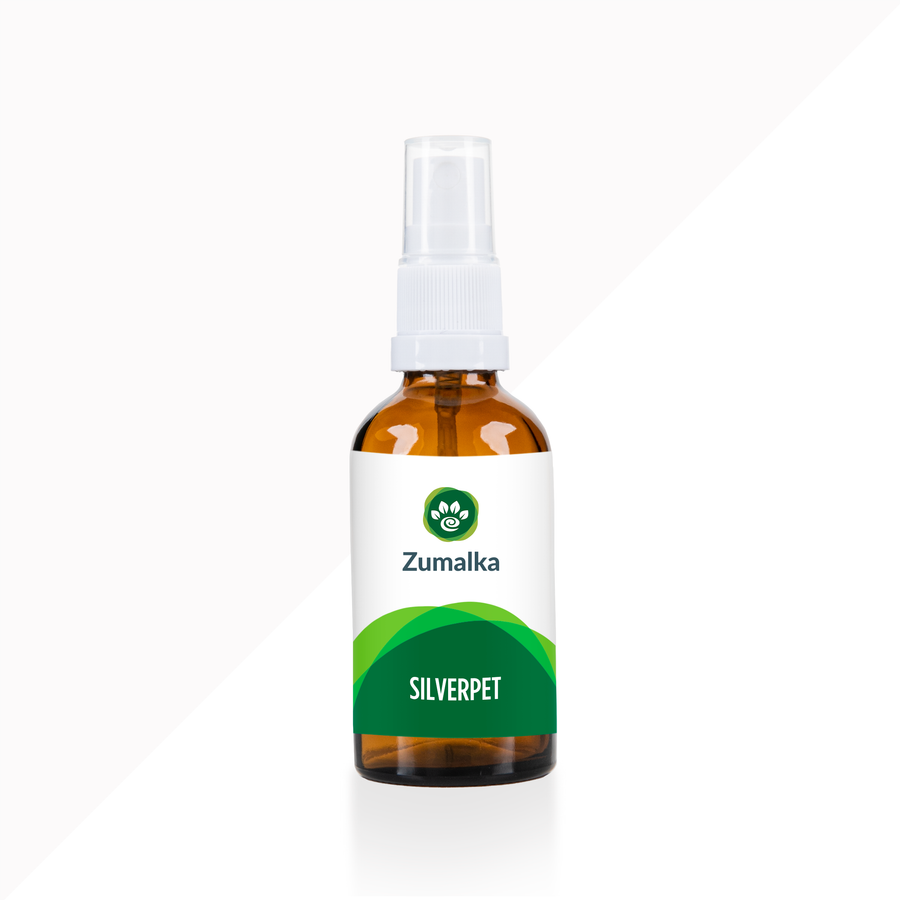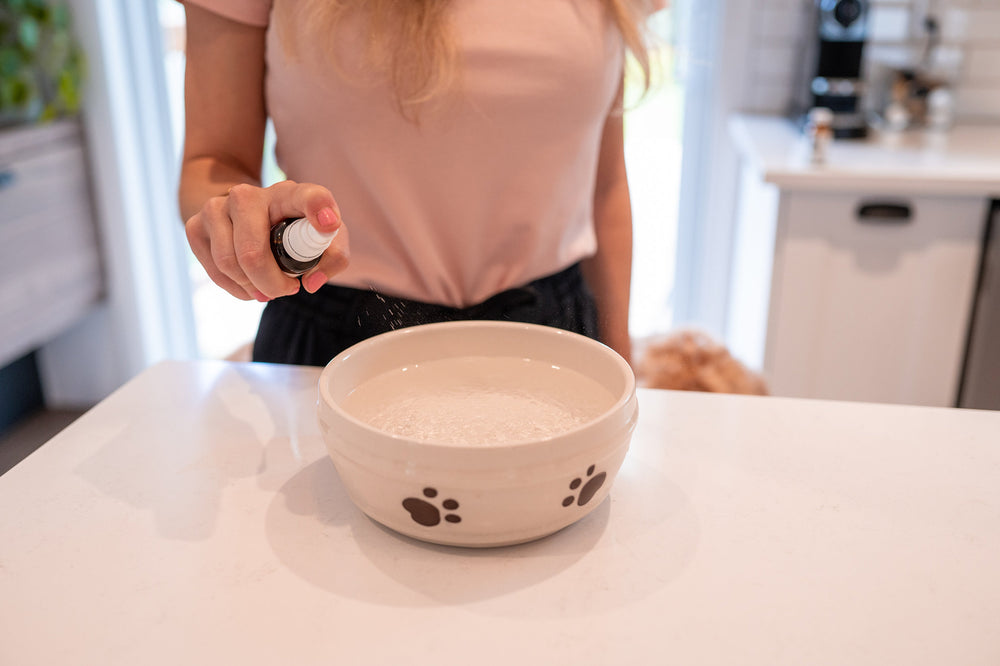Manage Diabetes in Cats With These 8 Natural Remedies
So you just found out that your feline family member has diabetes in cats…
As a pet parent myself, knowing that your beloved animal companion is going through some health issue can be rather upsetting, especially when it can potentially set off serious complications sooner or later like feline diabetes.
And while diabetes in cats requires immediate and proper care and attention, there’s no need to reach for conventional medicines to deal with this illness.
Although this may sound surprising, there are actually natural remedies that you can go for to properly manage this disease. Make sure you follow along because I’m going to give you a detailed walkthrough of what these are in just a bit.
Let’s begin by getting a rundown of what cat diabetes really is…
What is diabetes in cats?
At its simplest, diabetes in cats occurs when your feline family member’s body is not able to produce a sufficient amount of insulin, a type of hormone, to keep his glucose or blood sugar levels in check.
Insulin plays a key role in converting blood sugar into energy and your cat could experience significant negative effects if his body doesn’t turn out the ideal amounts of this hormone on a daily basis.
Moreover, cat diabetes is categorized into two different types, namely Type 1 diabetes and Type 2 diabetes. The former is characterized by the impaired response of a cat’s body to insulin and is deemed pretty rare among felines worldwide.
Type 2 diabetes in cats is the more prevalent variety and will be the subject of this article’s discussion.
Now we’ve got that covered, here are the usual symptoms of feline diabetes that you have to take note of…
What are the signs of diabetes in cats?
Here are the common indicators that your feline family member is afflicted with cat diabetes:
- Sudden and unexplained weight loss
- Excessive thirst and water consumption
- Noticeable changes in eating habits
- Apparent lack of energy and activity
- Partial blindness and difficulty navigating himself around
- Breath that has a slightly fruity smell
- Puts weight on ankles or heels instead of toes when walking
- Sudden inability to jump or skip
- Urine takes on a somewhat syrupy texture
For the next part of our discussion, I will walk you through the risk factors that could trigger feline diabetes…
What causes diabetes in cats?
What’s really interesting about cat diabetes mellitus is it’s mostly caused by internal factors that you and your feline family member cannot control. Most cats that are afflicted with this disease usually have the following attributes:
- More than six (6) years of age
- Male and already neutered
- Being obese or significantly overweight
- Using steroids to treat other health problems such as asthma
- You May Also Like 👉 The 4 Best Natural Remedies for Cat Bronchitis You Should Have in Your Pet Care Checklist 🐱
Now we’ve got that out of the bag, let’s find out what could happen if diabetes in cats is left unchecked…
What happens if feline diabetes is left unchecked?
Cat diabetes can result in a variety of negative consequences if not given immediate and proper care and attention. Apart from causing serious malnutrition, this illness can also subsequently lead to severe weakness of the limbs and diabetic ketoacidosis (DKA).
In case you’re not familiar with what DKA is, it is a serious complication of feline diabetes mellitus that triggers confusion, stomach aches, nausea, as well as other typical signs of the disease like increased urination and too much consumption of water.
The longer diabetes in cats is left untreated, the more pervasive and severe the effects of DKA will be. And it is not uncommon that a cat will be vulnerable to sudden death if his body can’t handle the effects of DKA anymore.
So we’ve already pointed out what happens if diabetes in cats is left untreated or unchecked.
How about we talk about the natural foods that you can go for to help your feline family member manage this disease this time around?
Natural foods that will help you manage diabetes in cats
If your cat is going through feline diabetes, here are the best natural remedies—backed by concrete scientific proof, of course—that you can use to support him during this health problem:
Apples help bring down blood glucose levels.
According to a study published in the National Center for Biotechnology Information (NCBI), apples have been seen to significantly help decrease blood glucose levels when consumed right before a meal.
In fact, the researchers of the study even emphasized that eating an apple before a meal may be a “simple and effective strategy for managing the glycemic response” for those who have impaired glucose tolerance.
To use apples in supporting your feline family member during diabetes in cats, feed him a small slice before serving him his meal. Make sure you don’t give your pet more than a quarter of an apple per day for this application.
Avocados help boost insulin sensitivity.
As highlighted by MedicineNet, avocados contain natural acids, vitamins and other beneficial compounds that can help improve the body’s sensitivity to insulin. Diabetes in cats usually impairs your pet’s ability to utilize insulin properly and refining this process can make managing this disease a bit easier.
To use avocados in supporting your feline family member during diabetes in cats, integrate a few small pieces of this fruit with his regular meals. It is important to take note that you should not give your pet no more than 15 grams of avocado a day.
Blueberries are loaded with antioxidants that improve glucose metabolism.
Another study featured in the NCBI reveals that blueberries contain antioxidant-rich anthocyanins that have been seen to help improve the body’s overall metabolism of glucose so that it can be absorbed by the system more efficiently.
To use blueberries in supporting your feline family member during diabetes in cats, add in no more than three of these in your pet’s meals per day. Keep clear from blueberries with broken skin or those with slightly reddish exteriors since they can be a bit sour.
Fatty fish help bolster insulin sensitivity.
The American Journal of Clinical Nutrition reveals that Omega-6 fatty acids and Omega-3 fatty acids, which fatty fish like mackerel, sardines, herring, tuna, and salmon are loaded with, helped improve the body’s insulin sensitivity.
To use fatty fish in supporting your feline family member during diabetes in cats, mix in a tablespoon of the same with your pet’s regular meals once or twice weekly. Make sure you only give your cat fatty fish pieces that are plainly cooked and free of bones.
Lentils help keep blood glucose levels normal.
As highlighted by another study in the NCBI, lentils have been seen to lower acute blood glucose levels as well as improve the body’s insulin response by slowing down overall digestion time.
To use lentils in supporting your feline family member during diabetes in cats, mix in a teaspoon of these plainly cooked legumes with your pet’s meals once per week. Besides being very filling, lentils can also lead to bloating and gassiness, hence the very minimal serving amount.
Oats helped improve the body’s responses to insulin.
In a different study published in the NCBI, oatmeal has been observed to improve the body’s overall glucose management while boosting its insulin responses at the same time. The researchers of the study also pointed out oatmeal’s beneficial effect on lipid profiles in individuals with Type 2 diabetes.
To use oatmeal in supporting your feline family member during diabetes in cats, use ¼ cup of plainly cooked oatmeal as the base of his meals no more than twice a week. Since oatmeal can be bland, you can also add other cat diabetes-friendly foods to the mix like fatty fish and avocados.
Pistachios feature a variety of benefits for those afflicted with diabetes.
According to another study in the NCBI, pistachios have several beneficial effects on glycemic control, blood pressure, obesity, as well as inflammation markers in diabetic patients.
To use oatmeal in supporting your feline family member during diabetes in cats, adding no more than 20 grams of plain pistachios to your pet’s regular meals per day will already suffice.
Make sure you keep clear from commercial pistachio snacks such as puddings and cakes since they tend to have lots of unnecessary seasonings and flavorings, not to mention very high fat content.
Yogurt is observed to help prevent Type 2 diabetes.
BMC Medicine reports that “higher intake of yogurt is associated with a reduced risk of Type 2 diabetes” as compared to the consumption of other dairy products. However, it is important to take note that the study only made reference to plain yogurt.
To use plain yogurt in supporting your feline family member during diabetes in cats, integrate no more than 4 tablespoons of this dairy product with your pet’s meals.
And while we’re on the subject of using natural means to support your cat during feline diabetes, here’s something that you should consider including in your home pet care checklist…
A tip you should consider including in your pet care checklist
It is without a doubt that your feline family member is unique and his needs as well as treatment options may differ from that of another cat when it comes to diabetes.
Zumalka’s Online Homeopathic Consultation is specific to your cat and helps get to the root of his problem instead of just treating the symptoms.
Our Online Homeopathic Consultation works well for all types of conditions, especially for pets dealing with multiple, chronic or behavioral issues.
Moreover, our consultations are 100% online via email and video call. It's a real conversation with a real Homeopath about your pet—without all the hassle and miscommunication.
You can click here to check out how these consultations work right now.
How about we go over some of the most frequently asked questions or FAQs about diabetes in cats next?
FAQs
Is a cat with diabetes in pain?
A cat suffering from feline diabetes may be eventually vulnerable to nerve damage if this health issue is not immediately dealt with the proper way. A key sign that indicates your cat has already incurred nerve damage is when he puts his weight on his ankles or his heels instead of his toes when walking. This position is technically referred to as the “plantigrade stance.”
Do diabetic cats sleep a lot?
While cats normally have very long sleeping hours—as much as 16 to 20 hours a day—those suffering from feline diabetes tend to move sluggishly even after a lengthy slumber. Another indicator of sluggishness that you can include in your checklist is the sudden lack of jumping and running in a cat’s daily routine.
Do cats with diabetes smell?
Feline diabetes can make a cat’s breath smell somewhat fruity. This is due to the ketones released in their breath. For context, ketones are natural acids produced by the liver when it converts fats into energy.
Why do diabetic cats drink so much water?
Cats suffering from diabetes in felines have a seemingly incessant need for water because most of the water that their body requires is flushed out along with their urine. This is why the urine of diabetic cats have a more sticky consistency compared to the urine of those that are not afflicted with this health issue.
How long do cats live with diabetes?
There is no definite answer for this one because each case varies. If this illness is pinpointed immediately and the proper support is given swiftly as well, then a cat’s lifespan may not be affected at all. On the other hand, if cat diabetes is left untreated or unchecked for a long time, it could already have a negative effect on your pet’s lifespan.
In summary, diabetes in cats can be a pretty tricky disease to control, but managing it becomes easier if you just know the natural remedies to go for.
And if you’re looking to give your feline family member the best natural support against diabetes in cats so he can have the quality of life you’ve always wanted, make sure you check out our Online Homeopathic Consultation right away.







I’m looking for support to help my cat control her diabetes I don’t have a lot of funds to help with insulin so I’m looking for an alternative all though I have switched her food but I’m also looking something like a snack that would help her boost her insulin intake any help is appreciated
Hi Connie, Great question ! I have submitted it to our homeopath, you should receive an answer via email shortly !
Hello, thank you for the article. My cat was diagnosed with diabetes about four months ago. He hasn’t stabilized yet and is taking 4 units twice a day. He has the symptoms. Drinks and urinates often. Eats more and is losing weight but he still plays with our other cat and doesn’t seem sick. Recently though he has been very restless for about an hour each evening after his shot. This doesn’t happen in the mornings. He’s always been very laid back. Why might he be doing this now and how can I help him to calm down? I’ve read that a little catnip might help but he’s never been interested in it. Any suggestions would be appreciated.
Dear Crystal,
Thanks for reaching out. We have sent you a private email so as to guide you more ! But to answer your question, you would have to consult your vet to see if the insulin can be reduced or stop following the diet change. Hoping to hear back from you !
Thank you for this article. If I make my cats food using the above ingredients, will this replace insulin shots. I can’t afford insulin but don’t want to put my cat down.
Leave a comment